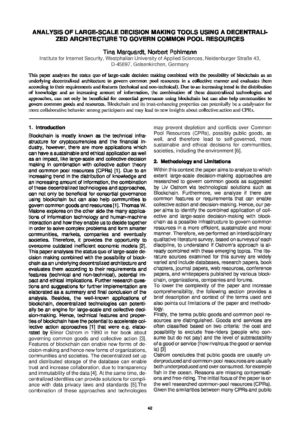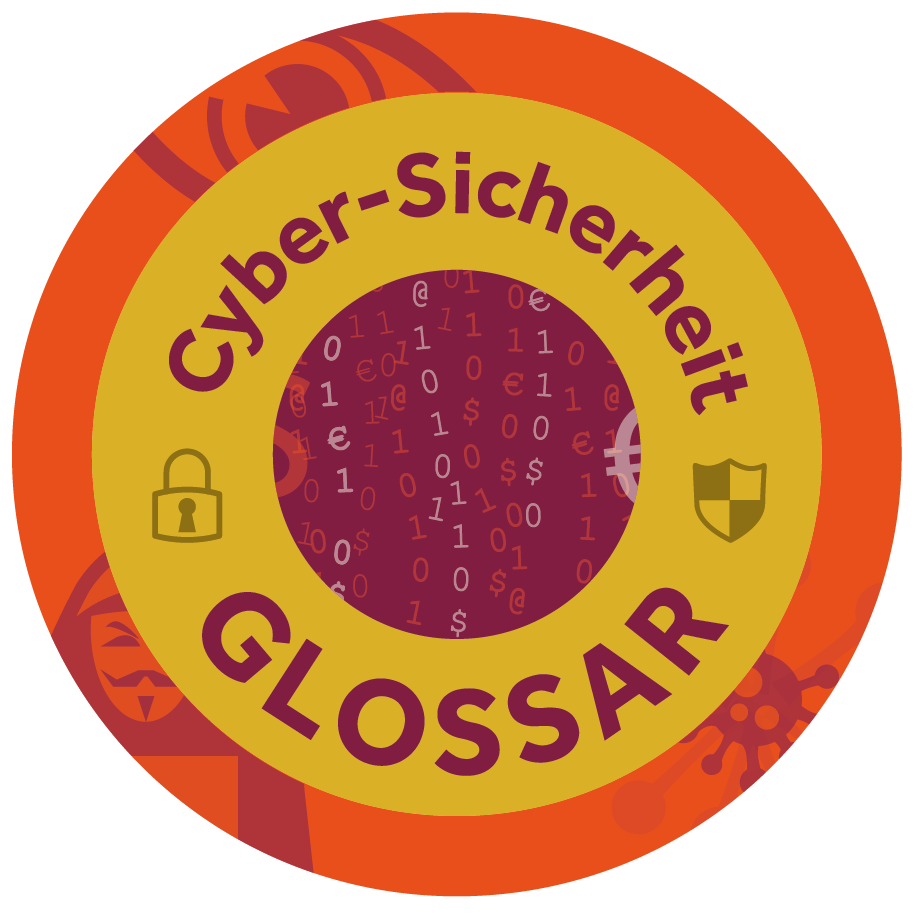A. Marquardt, N. Pohlmann:
„Analysis of large-scale decision making tools using a decentralized architecture to govern common pool resources”,
Konferenzband zum „Scientific Track der Blockchain“,
Autumn School 2020
This paper analyses the status quo of large-scale decision making tools combined with the possibility of blockchain as an underlying decentralized architecture to govern common pool resources in a collective manner and evaluates them according to their requirements and features (technical and non-technical). Due to an increasing trend in the distribution of knowledge and an increasing amount of information, the combination of these decentralized technologies and approaches, can not only be beneficial for consortial governance using blockchain but can also help communities to govern common goods and resources. Blockchain and its trust-enhancing properties can potenitally be a catalysator for more collaborative behavior among participants and may lead to new insights about collective action and CPRs. Introduction Blockchain is mostly known as the technical infrastructure for cryptocurrencies and the financial industry, however, there are more applications which can have a sustainable and ethical application as well as an impact, like large-scale and collective decision making in combination with collective action theory and common pool resources (CPRs) [1]. Due to an increasing trend in the distribution of knowledge and an increasing amount of information, the combination of these decentralized technologies and approaches, can not only be beneficial for consortial governance using blockchain but can also help communities to govern common goods and resources [1]. Thomas W. Malone explores on the other side the many applications of information technology and human-machine interaction and how they enable us to decide together in order to solve complex problems and form smarter communities, markets, companies and eventually societies. Therefore, it provides the opportunity to overcome outdated inefficient economic models [2]. This paper analyses the status quo of large-scale decision making combined with the possibility of blockchain as an underlying decentralized architecture and evaluates them according to their requirements and features (technical and non-technical), potential impact and ethical implications. Further research questions and suggestions for further implementation are elaborated as a summary and final conclusion of the analysis. Besides, the well-known applications of blockchain, decentralized technologies can potentially be an engine for large-scale and collective decision-making. Hence, technical features and properties of blockchain have the potential to accelerate collective action approaches [1] that were e.g. elaborated by Elinor Ostrom in 1990 in her book about
governing common goods and collective action [3]. Features of blockchain can enable new forms of decision-making and hence new forms of organizations, communities and societies. The decentralized set up and distributed storage of the database can enable trust and increase collaboration, due to transparency and immutability of the data [4]. At the same time, decentralized identities can provide solutions for compliance with data privacy laws and standards [5]. The combination of these approaches and technologies may prevent depletion and conflicts over Common Pool Resources (CPRs), possibly public goods, as well, and therefore lead to self-governed, more sustainable and ethical decisions for communities, societies, including the environment [6].
…
Conclusion and Further Research
Since Ostrom published her theories based on observation and studies of real use cases decentralized technologies emerged and humans started to be interconnected. As pointed out by Buterin and Ostrom one of the collective action problems is that it is difficult for all included stakeholders to organize and decide together [6] [10].
Blockchain in Combination with Large-Scale Decision-Making Tools can be a possible infrastructure to test Ostorm’s theory further, since technological progress made a lot of the principles less costly and hence feasible. Consortial Blockchains and Ethereum seem to be a good test infrastructure for now, since it enables smart contracts and consortial governance provides some features in alliance with the collective action theory.
Therefore, more research on the potential of consortial blockchain governance in combination with CPRs has to be done. Furthermore, Ethereum as a possible test environment should be evaluated in more details with regards to its technical properties and possible implementations also in combination with other technologies and systems. It may lead to a suitable infrastructure which can help to test real world scenarios; and predict with new data analysis tools such as computational neuroscience and machine learning, the outcome while changing one variable at the time and hence refining rules suggested by Ostrom and other experts and interdisciplinary researchers. Moreover, more research needs to be done on consensus-reaching processes that are less costly, then the ones currently used in LSDM [15]. Blockchain Technologies like Ethereum provide already less costly options for Consensus Reaching Processes (e.g. Aura, Clique and IBFT) than the well-known but expensive Proofof-Work in Bitcoin.. However, researchers, legislators and also entrepreneurs are still facing a lot of challenges within each discipline that needs to be addressed to make further progress with this fairly new field. The combination of these technologies can potentially provide solutions for decentralized selfgovernance within a centrally organized system that prevents free-riding and depletion of CPRs.
Furthermore, it needs to be highlighted that trust is addressed as one of the core requirements for collective action. Therefore, blockchain and its trustenhancing properties can potenitally be a catalysator for more collaborative behavior among participants and may lead to new insights about collective action and CPRs. …
kostenlos downloaden | 




